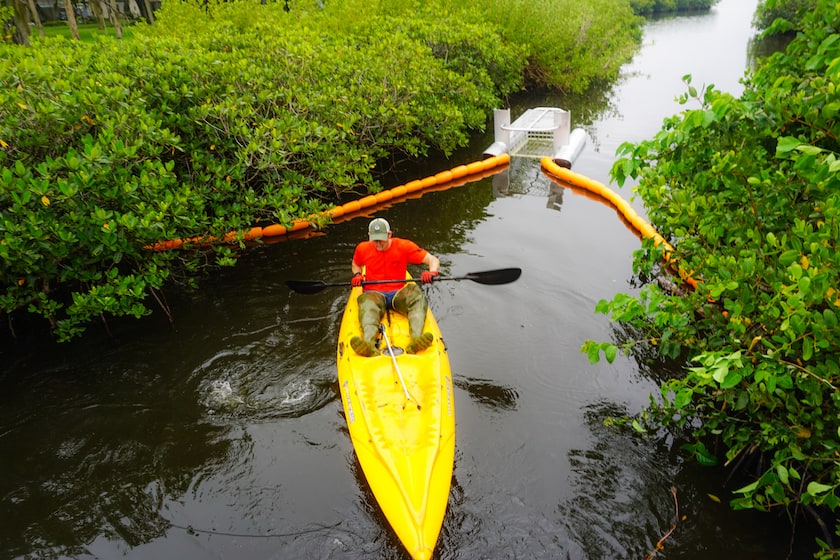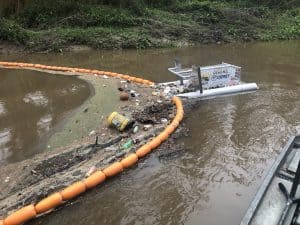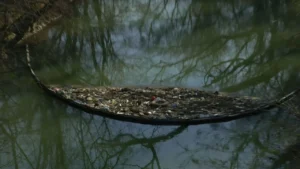
A cage-like device floating in Clam Bayou – dubbed “litter gitter” by scientists – has one job to do: report on the amount and types of waste in Florida waterways.
The Osprey Initiative team, in conjunction with the Tampa Bay Estuary Program, deployed Clam Bayou’s “litter gitter” on Tuesday, May 4 in an effort to eventually reduce the amount of trash in the area.
It’s one of 12 marine debris collectors, roughly $2,500 each, deployed throughout Pinellas, Hillsborough and Manatee counties as part of the three-year Trash Free Waters Grant from the Environmental Protection Agency (EPA).
The Tampa Bay Estuary Program was awarded roughly $500,000 for implementation of trash free water projects and research throughout the area.
“While the primary goal of the device is to collect litter, the type collected raises questions about where the debris is coming from,” said Joe Whalen, communication and outreach coordinator with the Tampa Bay Estuary Program.

In addition to the Clam Bayou device, other pollution reducers, such as Watergoats $3,300 devices and Seabins $6,500 devices, are also being installed throughout the three counties.
A recent discovery in Tampa Bay waters has been the consistency of mini chip bags washing into the cage.
“There’s a number of schools in the area, which really paints a picture of how the chip bags are getting into the bay,” Whalen said. “Potentially, there could be more education in the schools about the environmental consequences of not disposing of trash correctly. There’s a number of options.”
Another new bit of garbage is also appearing in local waterways: masks.
“PPE items have become a significant component of the region’s litter problem in the past year,” Whalen said. “When folks are required or encouraged to carry new, often single-use accessories with them, the opportunity for that accessory to be left behind becomes a natural possibility.”
Teams from Keep Pinellas Beautiful, Keep Tampa Bay Beautiful, Keep Manatee Beautiful, Osprey Initiative, and the Mobile Bay National Estuary Program are responsible for maintaining the devices. This could be once or twice a month, or after a heavy rain.
For more on the project, visit epa.gov/trash-free-waters.
This story originally appeared on The Gabber by Abby Baker. Read the original story here.



